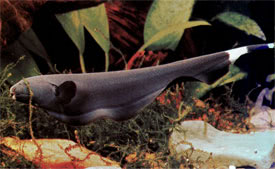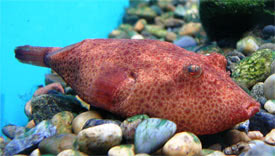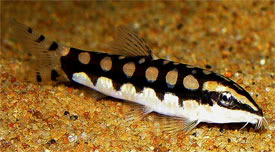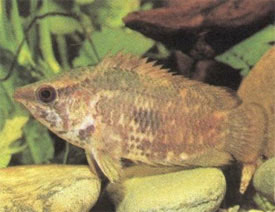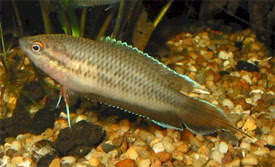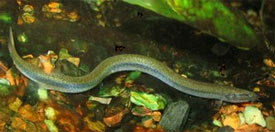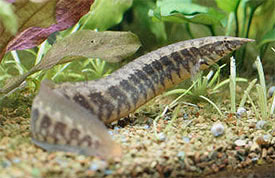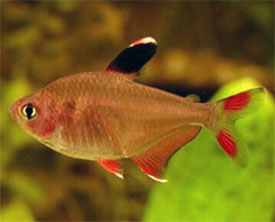
 Magyarul / Hungarian
Magyarul / Hungarian
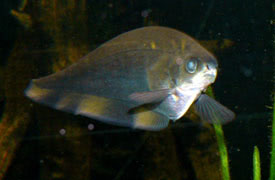
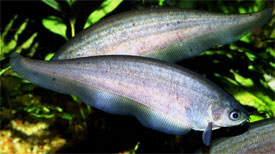

- Scientific name: Xenomystus nigri
- Synonyms: Notopterus nigri
- Common name: African Knifefish
- Group: Other fishes
- Habitat: Africa; Zaire Gaboon, Niger, Liberia
- Size: 30 cm
- Biotope: Inhabits in the upper reaches of the Nile, in still and slow-moving parts.
- Social behavior: When young the fish school, but as adults they are loners; frequently intolerant of their genera though peaceful toward other tankmates.
- Diet: Carnivorous; avid predators the fish will eat all types of live foods: tubifex, whiteworms, insects, insect larvae, molluscs, fishes, earthworms.
- Breeding: Easy
- Tank: Minimum 300 litres
- Population: 1 fish for 300 litres
- Decoration: Suggest dense vegetation along the edges with open swimming space in the center, with hiding places among roots and rocks. The tank should be slightly darkened. Since the fish are nocturnal, they are best kept alone.
- Temperature: 24-28°C
- pH: 6-7
- Hardness: 1-15 NK°
- Lifespan: 8-15 years
Description: The African Knifefish has an elongated, laterally compressed body, with an arched back. The color of the body is brown and the fins are lighter. The mouth is large, and they have a pair of short barbels. The caudal and anal fins are fused and run from beneath the gill opening to the pointed end of the body, creating a uniform, skirtlike fin. The fish wil emit bell-like sounds, produced by ejecting air from the swim bladder. The fish can be distinguished from other Knifefishes by an absence of the dorsal fin. One of the easiest species of knifefish to care for, the African Knifefish is hardy and generally more outgoing than other species of knifefish.
There are no external sexual differences between males and females. Little is known about aquarium breeding. They produce characteristic barking sounds during courtship. In the wild the fish lays 150-200 eggs at night in holes and crevices, each about 2 mm in diameter. The male guards the eggs, which hatch in 6-9 days.
















































